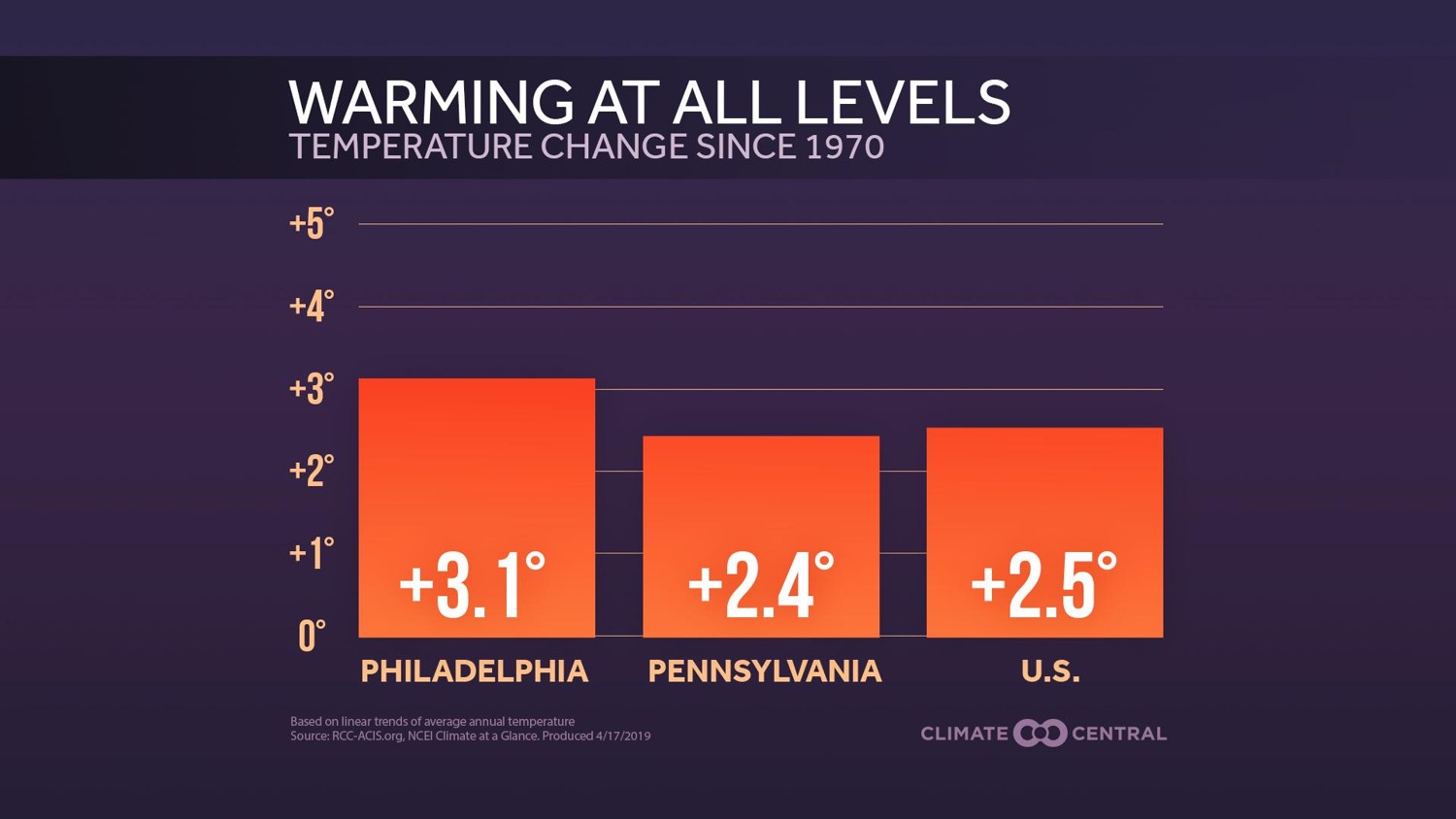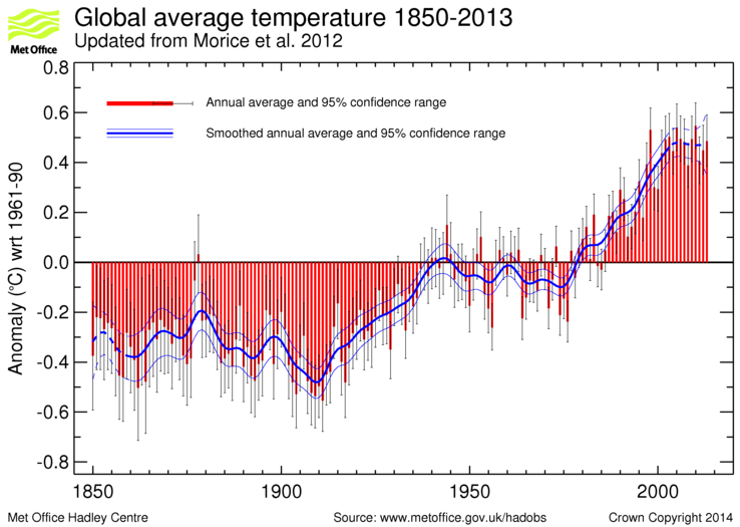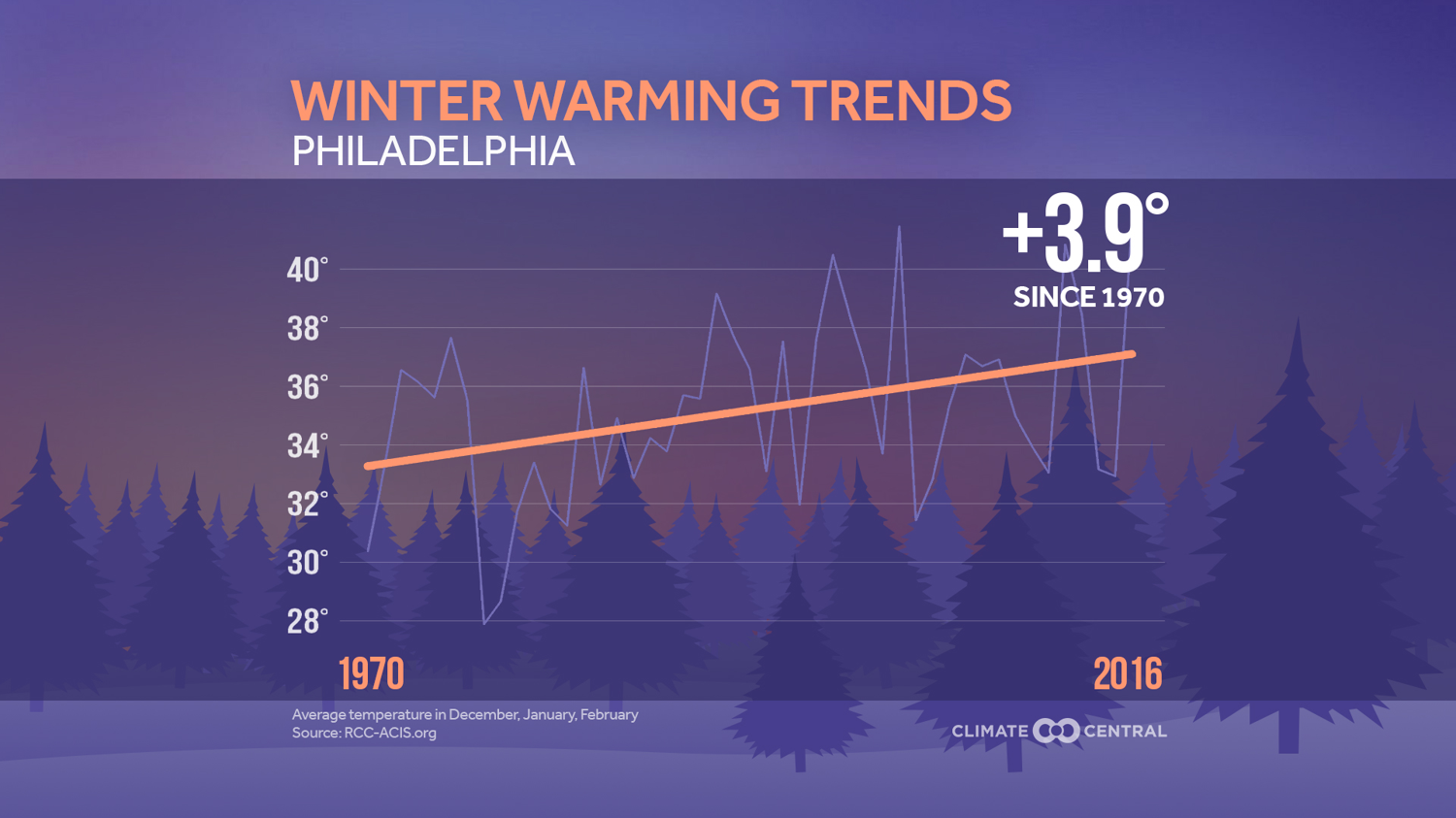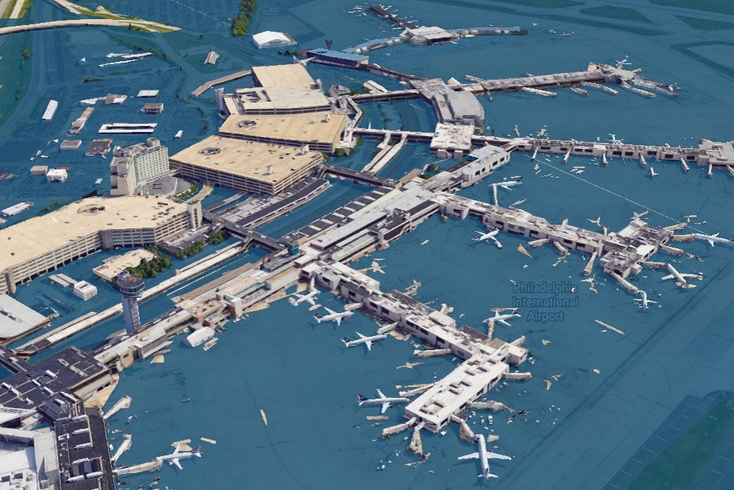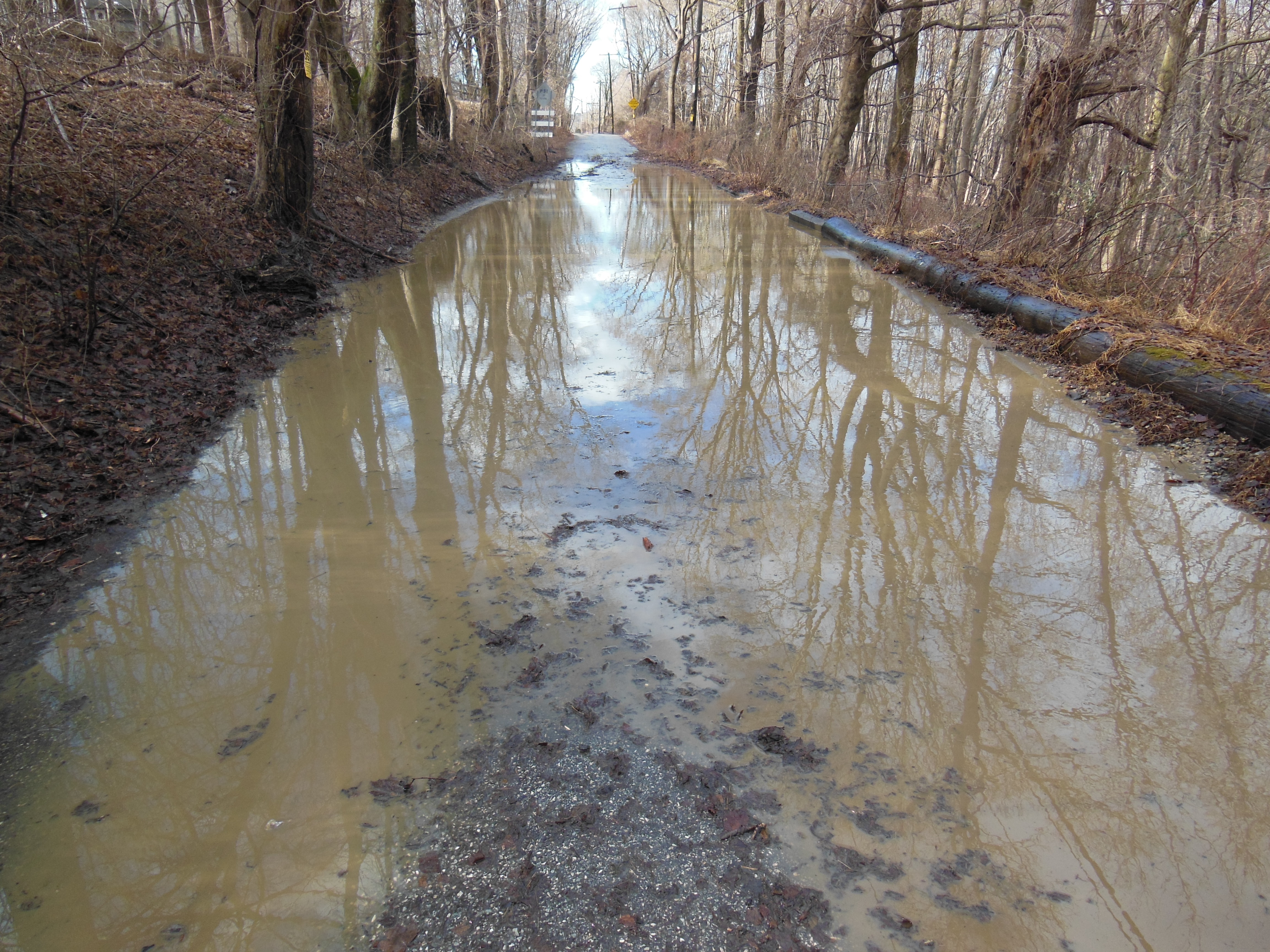By Mike Weilbacher, Executive Director
Climate change remains in the headlines, as wildfires, flooding, heat waves, ice cap melting, and more dominate the news. But what will happen here in Philly? How will we fare in a rapidly heating world?
As the city’s Office of Sustainability notes in “Growing Stronger: Toward a Climate-Ready Philadelphia,” we have weathered “the snowiest winter, the two warmest summers, the wettest day, the two wettest years, as well as two hurricanes and a derecho” since 2010, the latter an unusual, high-energy storm system. Climate change is teaching us new language.
As the city’s Office of Sustainability notes in “Growing Stronger: Toward a Climate-Ready Philadelphia,” we have weathered “the snowiest winter, the two warmest summers, the wettest day, the two wettest years, as well as two hurricanes and a derecho” since 2010, the latter an unusual, high-energy storm system. Climate change is teaching us new language.
And we’re getting hotter. Climate Central reports that Philadelphia’s average annual temperature has increased more than 3° since 1970, higher than the state as a whole (2.4°) or even the U.S. (2.5°). Since 2000, Philadelphia has suffered 58 record high temperatures, but only five record lows. A 2018 Philadelphia Inquirer article reported that our temperatures rarely hit 90° more than 40 times in one year (this happened only twice prior to 1987). But between 1987 and 2017, these severe heat spikes happened seven times and in 2010, the thermometer hit the 90° mark an astonishing 55 times. Climate Central’s data indicates Philadelphia now has 16.8 days of above-normal summer temps. By 2050, our weather will resemble Richmond. By 2100, Brownsville, Texas.
And wetter. Philadelphia has also seen a 360 percent spike in heavy downpours since 1950. The city received over 61 inches in 2018 and 2019 is already absurdly wet, with a downpour almost daily.
Climate has changed winter, too. Climate Central reports that winters have warmed an average of four degrees since 1970, putting the average winter temperature at about 37°, the highest in our history. Our four largest snowfalls since we began keeping weather records have all been since 1999, including that year’s record 30.7-inch avalanche.
Climate has changed winter, too. Climate Central reports that winters have warmed an average of four degrees since 1970, putting the average winter temperature at about 37°, the highest in our history. Our four largest snowfalls since we began keeping weather records have all been since 1999, including that year’s record 30.7-inch avalanche.
Five of the largest 10 snowfalls have been in that span as well. A warming climate means more evaporation and with more water in the atmosphere, it sometimes drops as snow.
This warming, weirding climate will impact our health. A 10-day heat wave in 1993 resulted in 118 deaths in our city. Extreme heat is now responsible for more deaths in Pennsylvania than all other natural disasters combined. An average of 50 Pennsylvanians already die annually from the effects of extreme heat, a number that will only increase in a climate-challenged world.
Older adults are especially susceptible to heat waves, as are very young children and low-income people without access to air conditioning. In an aging city with a high poverty rate, heat-related deaths will impact these populations more than the rest.
The Office of Sustainability reports, “hot weather encourages the formation of ground-level ozone, which reduces air quality and poses risks to individuals with respiratory conditions such as asthma. In 2010, nearly a quarter of children in Philadelphia had asthma, among the highest rates in the nation.” Our children will have a harder time breathing in a hotter world.
The crime rate climbs with heat, as does the murder rate—and the suicide rate. A 2018 study published in Nature Climate Change measured the suicide rate against temperature, noting that “unmitigated climate change” could cause between 9,000 and 40,000 additional suicides in the United States by 2050.
Then there is flooding. The tidal Delaware River has already been rising 0.11 inches per year since 1900. So conservative estimates say that with moderate cutting back of greenhouse gases, the city will see an increase in sea levels of two feet by 2050 and four feet by 2100. With so much of the city built around two rising rivers—the airport, the stadiums, Penn’s Landing, Fishtown, and so much more—a projected rise of four feet essentially drowns all of this.
Changing climate has already impacted our quality of life. As we continue debating long-established facts, we lose something invaluable: time. We continue doing so at our peril.
Changing climate has already impacted our quality of life. As we continue debating long-established facts, we lose something invaluable: time. We continue doing so at our peril.

